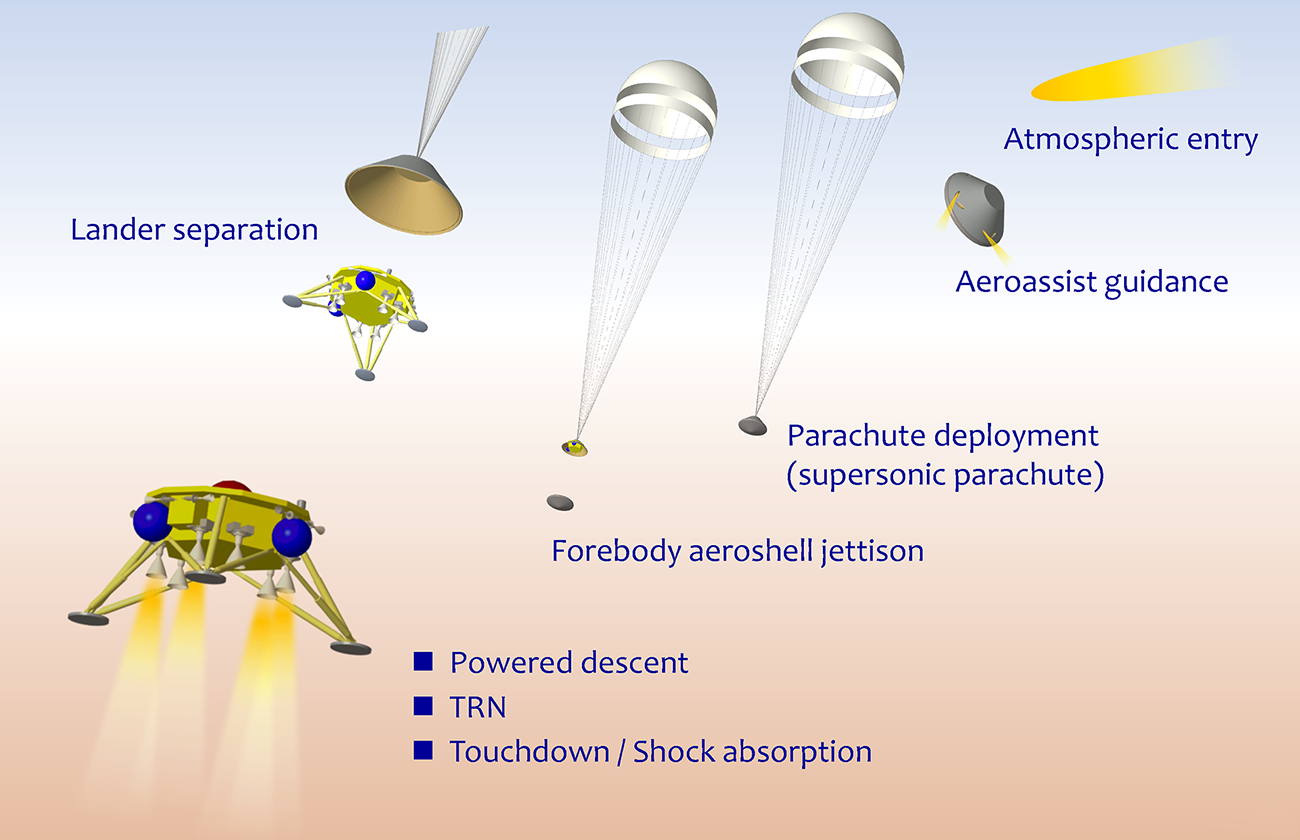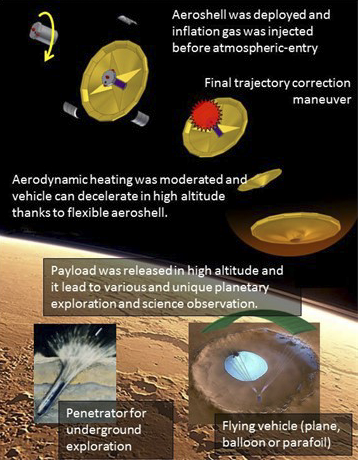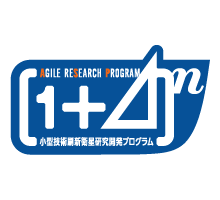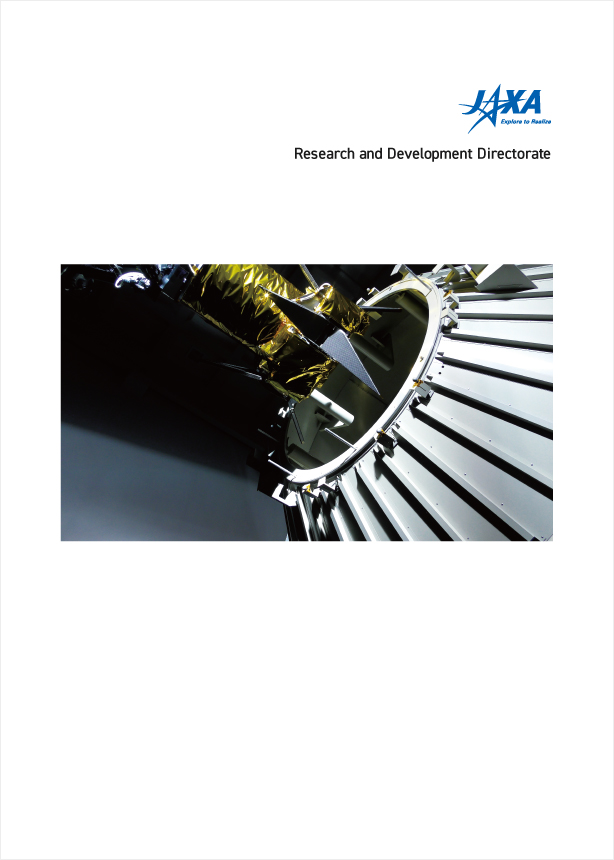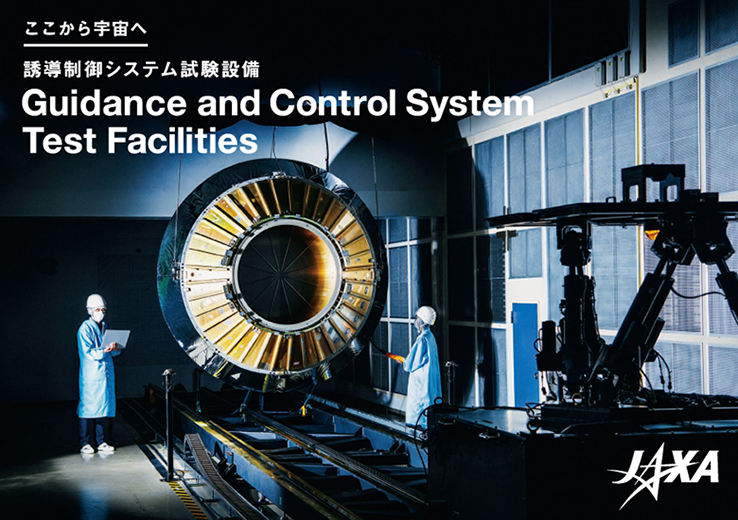Significance of Research
The EDL&R technology is one of JAXA's core competencies, and we believe that we should maintain and improve its high international competitiveness. However, the frequency of atmospheric entry missions in JAXA is not so high that it is difficult to maintain and improve the technology level, while in recent years, the system requirements have become more complex and diverse, and the number of problems to be solved has increased. It is expected that this research and the cross-sectional team building to implement it will steadily inherit and improve the knowledge of EDL&R technology that JAXA has cultivated so far, support the projects currently under development in terms of technology, and produce future EDL&R missions that will create new value.
Research Goals
As shown in Fig.1, this research consists of 15 research themes in 5 technical fields for the advancement of the common EDL&R infrastructure technologies, and the studies on the future EDL system mainly related to the three categories of space exploration missions. The goals of each research subject are as follows.
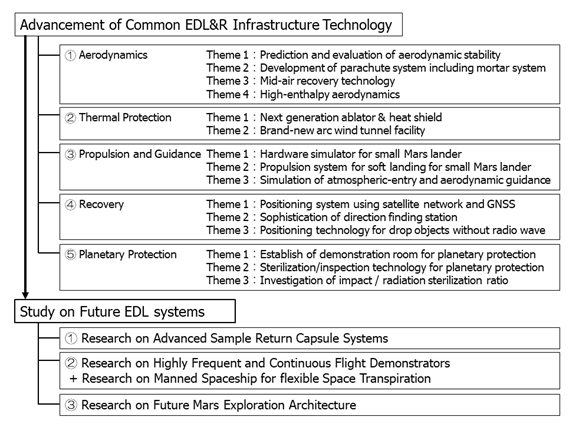
Advancement of Common EDL&R Infrastructure Technologies
Based on Basic Plan on Space Policy, International Space Exploration Scenario, and Space Science Exploration Roadmap, we will focus on the development of the 15 research themes in 5 technical fields of EDL&R (upper row in Fig.1) that are necessary to support the current and future EDL&R missions and to produce space missions that create new value, and achieve the goals of each research theme.
Research on Advanced Sample Return Capsule Systems
To acquire advanced sample return capsule (SRC) technology, we will develop a system design that meets the requirements of CAESAR (Fig. 2) as a representative reference model, which is a comet sample return mission jointly proposed with the U.S., and develop a full breadboard model (BBM) to demonstrate its feasibility.
The CAESAR SRC is the ultimate form of the SRC that can be envisioned at present. The critical technical issues identified in the preceding study (conceptual design) will be intensively addressed, and the results will be fed back to the system design.Additionally, the technology acquired here will be applied to the advanced SRC for JAXA lead sample return mission in next generation.
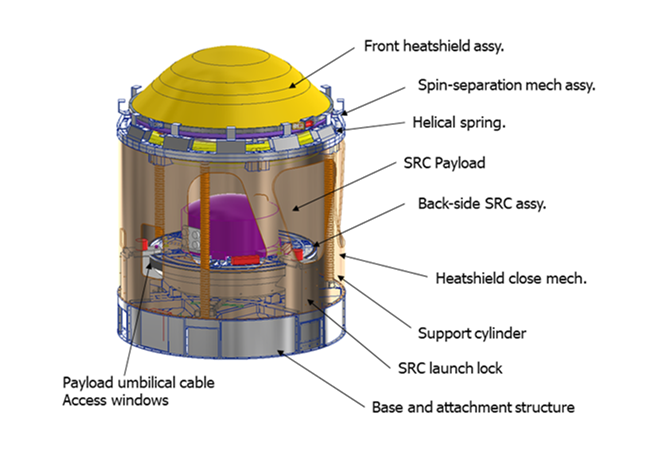
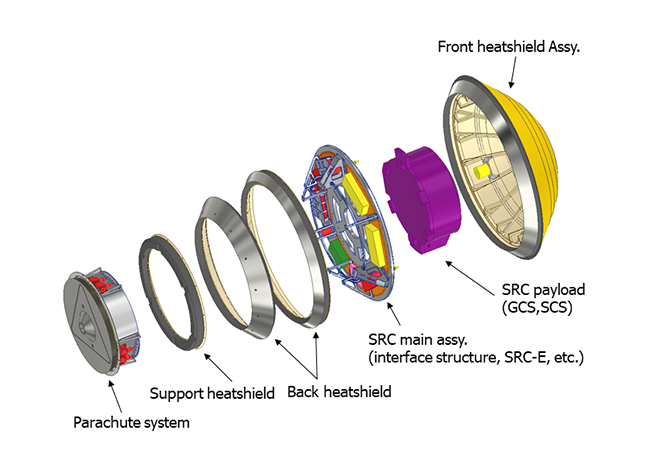
Research on Highly Frequent and Continuous Flight Demonstrators
By following and improving the reentry and recovery capsule system design technology acquired through the development of the HTV Small Reentry Capsule (HSRC), we aim to establish a high-frequency and continuous sample return system that will contribute to expanding the use of low Earth orbit, including the International Space Station. Two types of high-frequency sample return capsules, as shown in Figure 3, are under consideration. We aim to realize "A frequent sample return capsule from platforms" through concept co-creation with private companies that plan to develop a business for high-frequency sample return from low Earth orbit.
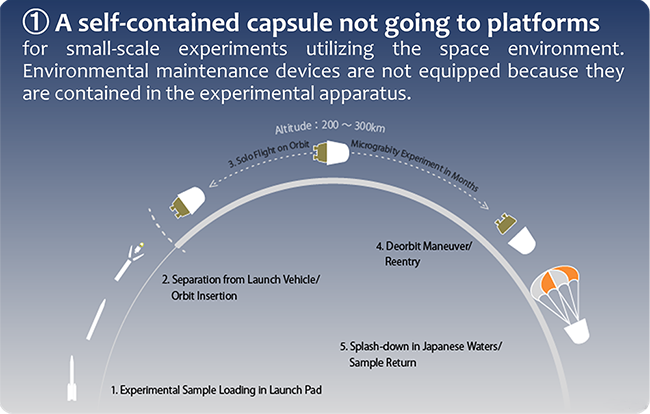
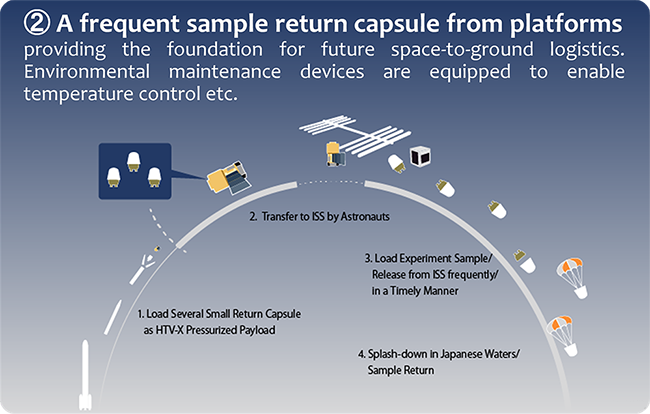
Research on Future Mars Exploration Architecture
As a part of the acquisition of landing and takeoff technologies for gravitational solar system bodies as described in the roadmap of Basic Plan on Space Policy, we will study the mission architecture and promote the research on major technologies that are necessary to actualize JAXA’s Strategic Mars Exploration Program (JSMEP) after MMX, following the International Space Exploration Scenario and the Research on Space Exploration Technology.
A step-by-step demonstration plan to acquire Mars EDL technology will be developed. We will conduct trade-offs and conceptual studies of the architecture of the Mars Landing Demonstrator (see Fig.4) to demonstrate critical technology and the system.
